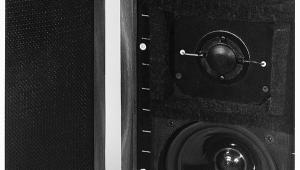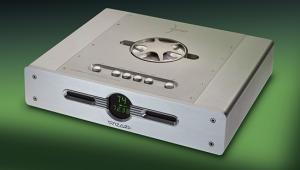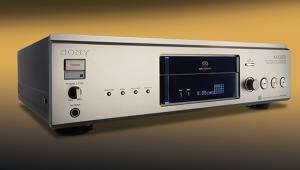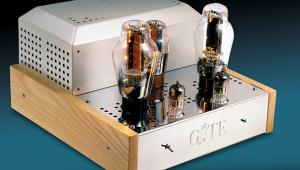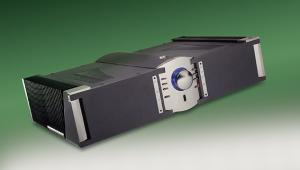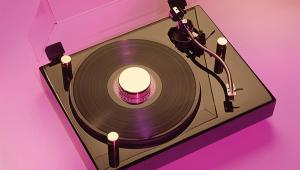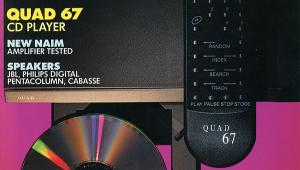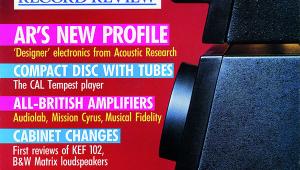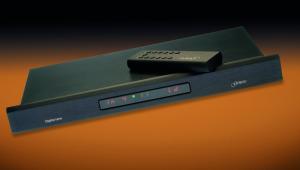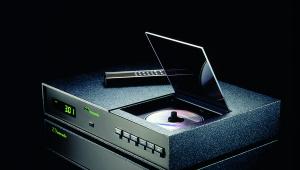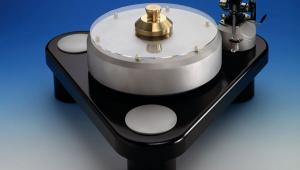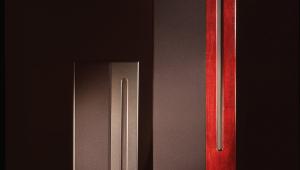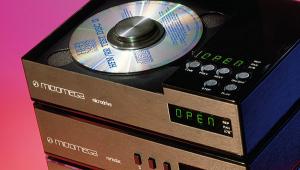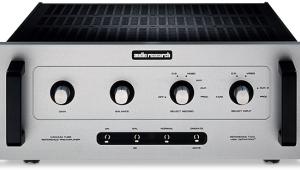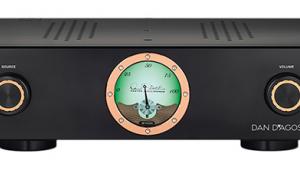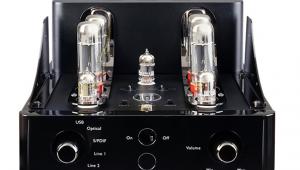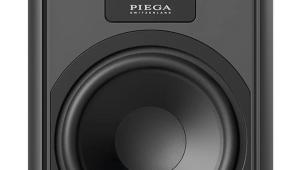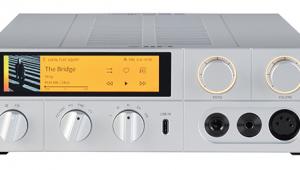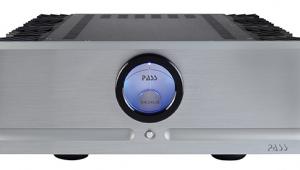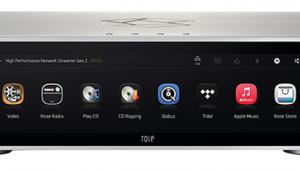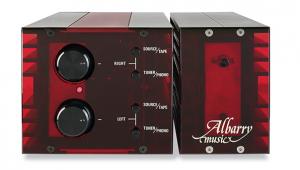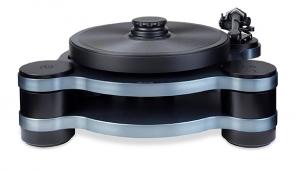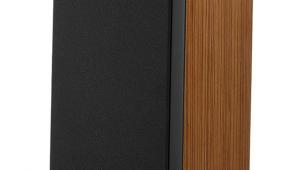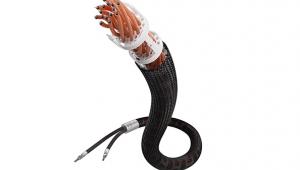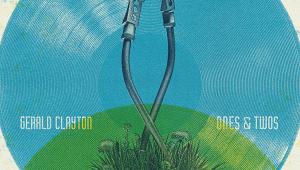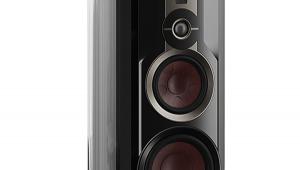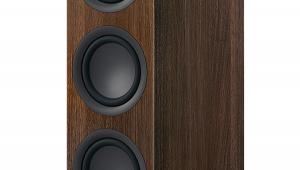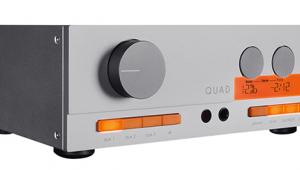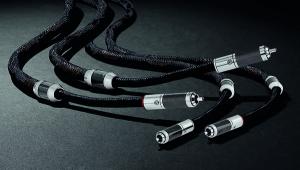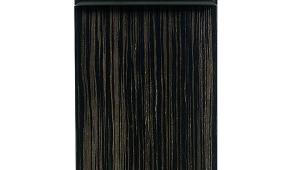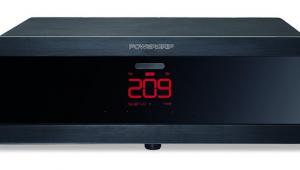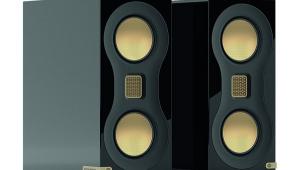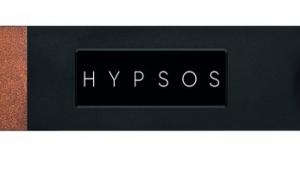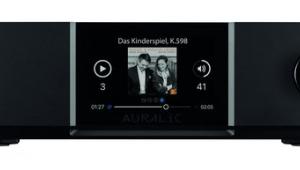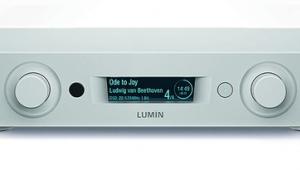Nightingale Point 5
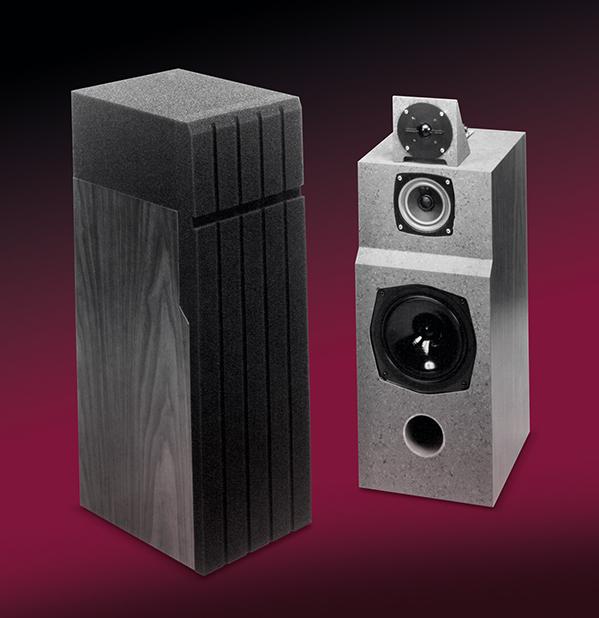

The Point 5 from Nightingale Acoustics is a very unusual loudspeaker, which might be said to wear its heart on its head. Starting at the other end, its body is a basically rectangular cabinet made of 19mm particle board with an integral front panel that is stepped inwards by 24mm over the top 180mm, the two levels being joined by a slope.
In the lower, main section are the bass driver, almost central on the front, with the reflex port (75mm in diameter and 167mm long) below it. The port is a substantial tube 3½mm thick. Meanwhile, the midrange driver is on the inset portion of the panel.
Foam and function
The interior of the enclosure is lined with foam, the thicknesses varying from 25-50mm, and a substantial lateral brace is fitted along the back, between the side walls, roughly a third of the way up the enclosure. The cabinet is veneered only on the sides, all the other faces being fleck-painted. A contoured foam grille completes the front, and this is fixed in place by adhesive. It is shaped to fill in the stepped part of the panel, presenting a vertical front surface. The usual recessed plastic connecting panel is fitted near the top of the cabinet, and this offers the user a choice of 4mm sockets or male two-pin DIN.
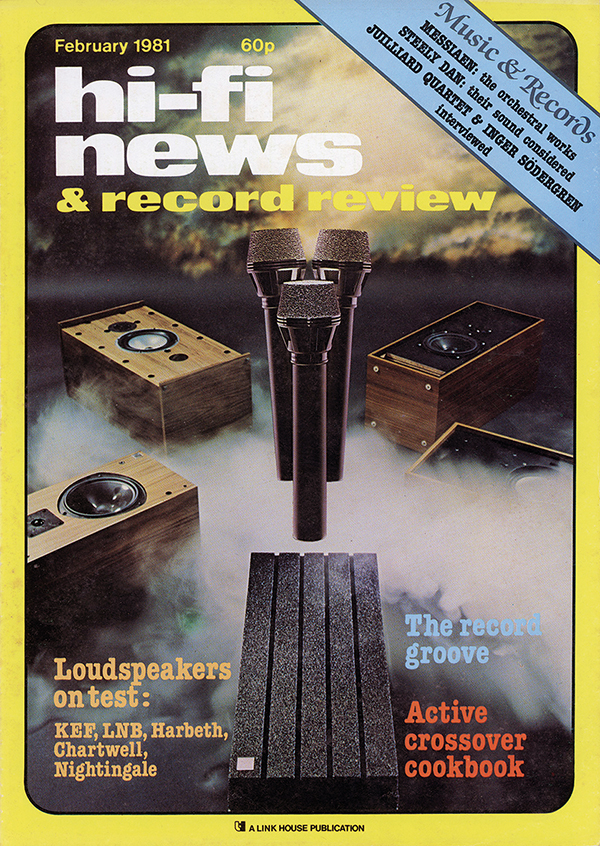
Something missing? Oh yes, the head! Sitting atop the cabinet is a foam cover, rectangular, with a chamfered top front edge – it is held only by two adhesive strips. Under it sits the tweeter, mounted somewhat offset from the centre line, above the midrange unit in fact, on a vertical metal bracket. Because of the offset, which helps to reduce any combination of diffraction effects from the side edges, the speaker has to be supplied in handed pairs if stereo imaging is not to be worsened. Also beneath the lid is the crossover, which is an 11-element affair on a PCB, screwed to the top.
Tweeter tact
Some care in handling the speaker is required, since the cover is not reinforced in any way, and the tweeter and crossover could be vulnerable to acts of savagery, such as standing it upside down. It shouldn’t happen, of course, but we all have our moments of aberration. Needless to say, the reason for stepping the driver fronts is to give time-delay compensation. The whole structure is well-made, feels solid, and it is a relief to see a loudspeaker that is satisfyingly different.
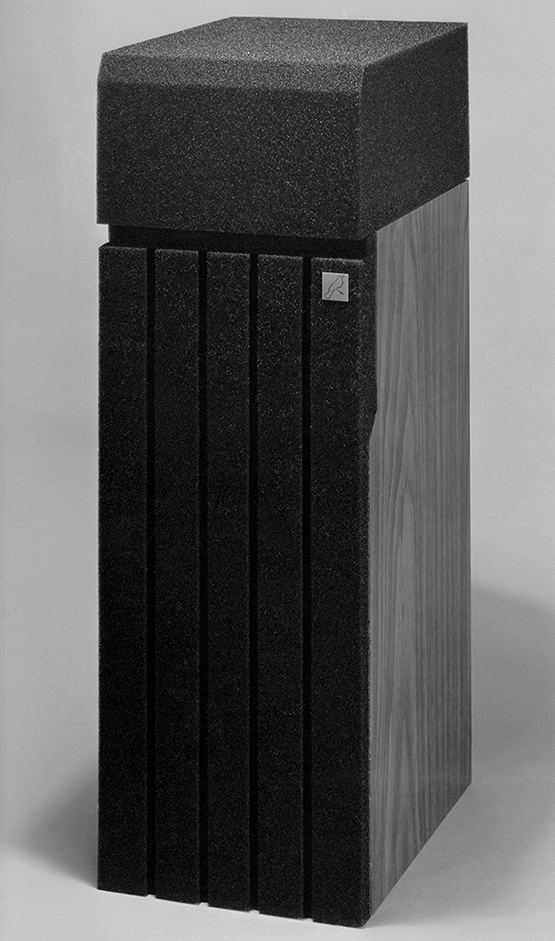
Although it looks big enough for floor-mounting, stands are recommended, the suggested one being the 8in AVF stand, without castors. These were not available for our tests, but others of similar height were employed, the speakers being about 1½m from the end wall and 3⁄4m from the side walls.
![]() Wiring woes
Wiring woes
First impressions were not good – the tonal balance seemed far from flat, and something appeared very wrong at the top end. It was therefore decided to measure the performance of the speaker before any in-depth listening was done. The sinewave response showed a serious and spiky suck-out between 2kHz and 4kHz, and the reaction of those present was unanimous – the tweeters were out of phase. Lifting its hat and looking at its brains showed that the wiring was correct according to the board markings, but we decided to operate anyway, and reversed the phase of the tweeter. The ‘EEG’ promptly returned to normal, and the maker subsequently confirmed that ‘correct’ was indeed ‘incorrect’, due to the use of a common board with non-applicable markings. This will be rectified in production.
Fresh listening tests showed a marked improvement, the main comments on general, extended listening being that the top was slightly ‘fizzy’ and hard, there was some ‘presence’ lift that tended to reduce the effective bass content, and some mid colouration was noticed. It is unfortunate that the measurements had been seen before these tests, but the graphs were kept out of sight during, and for some days before the listening, and there is little chance I could have remembered any details.
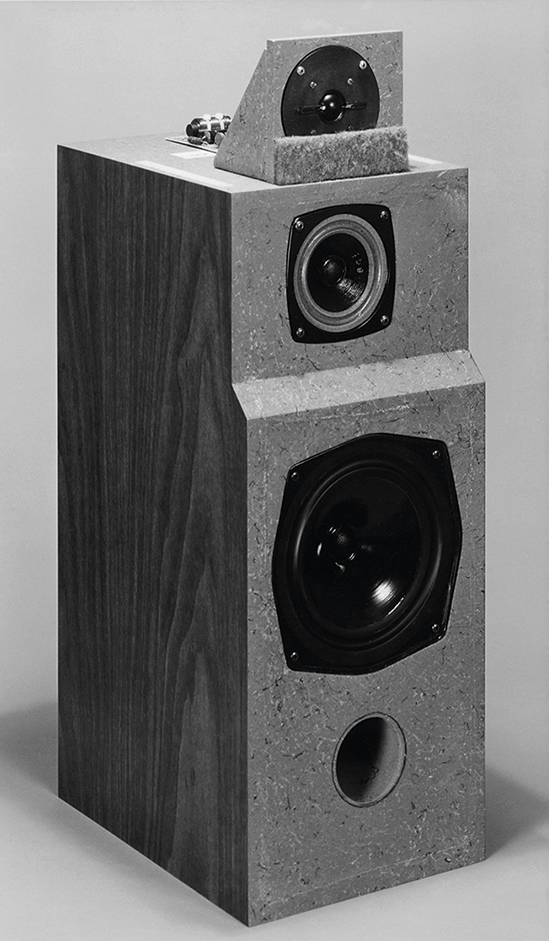
Strings were also thinner, the cellos being slightly recessed, with an overall increase in ‘chestiness’. Organs showed less 4’ output, the reeds were more irregular and sharper, but rather thinner, and mixtures more strident. Triangles and bells were also sharper, most percussion instruments being more emphatic, and more hollow. Organ pedal, bass drum and double basses indicated less bass extension, though not significantly so. Harpsichords were duller in the mid, with less sweetness in the top.
Hats off
When it came to imaging, with good stereo inputs this was generally considered to be good, with adequate lateral accuracy but some vertical patterning, and the perspective depth, though reasonable, was not outstanding. Trying the loudspeaker without its hat merely increased the tweeter output and was not liked. The appearance also suffers, of course, if that is a consideration.
The maximum obtainable level was very considerable and certainly far more than most users could stand for long. There is no protection – some samples may have a fuseholder near the input socket, but there is no fuse in it! However, a good spell somewhat above the recommended 100W peak produced no problems. Some slight distortion was heard, but it was nothing to worry about, particularly in these extreme conditions.
Frequency funnies
Examining the measurements taken does show a gradual upward slope over the band. This was slight, but probably significant, with a dip around 500Hz, and a somewhat spiky top. If I say that these features can account for some of the audible effects, some of our sceptical readers may simply fall about laughing, remembering the circumstances of the measurement. Well, please yourselves!
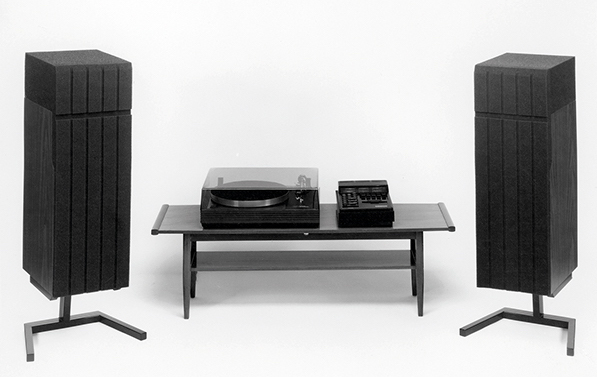
The impedance modulus curve is typical, showing a well-controlled impedance, the minimum modulus being 5ohm at about 100-200Hz, a perfectly respectable value, with an average very close to nominal. The sensitivity in the measuring room was 93dB SPL of pink noise at 1m for 10½V input, which is again a very reasonable figure. Although some response features have been mildly criticised, the basic design is a good one, and my feeling is that a little attention to the midband/bass crossover and to the tweeter could make this an outstanding performer, if costing considerations permit.
Conclusion
As this design currently stands, I would hesitate to make a firm overall recommendation, but would suggest audition, especially by those who prefer a brightish sound.
